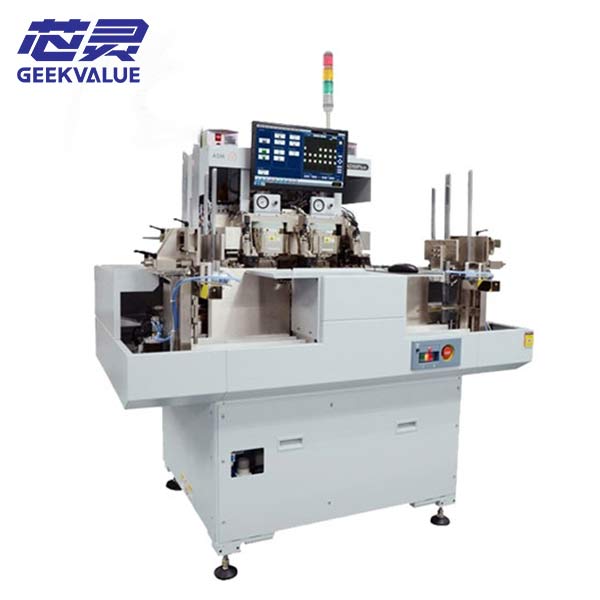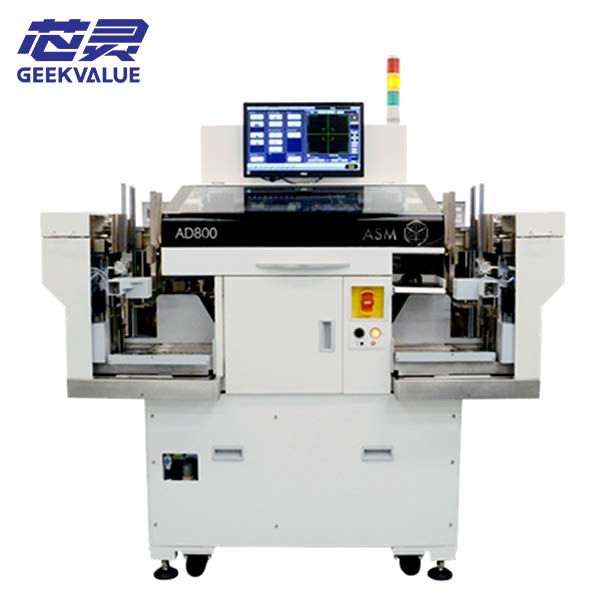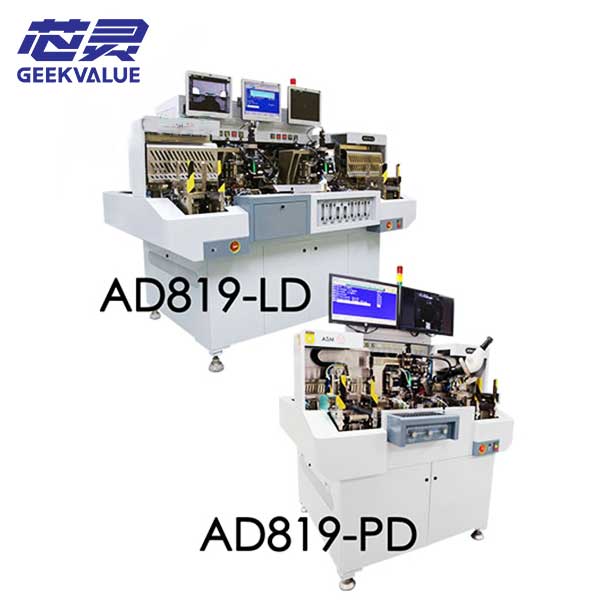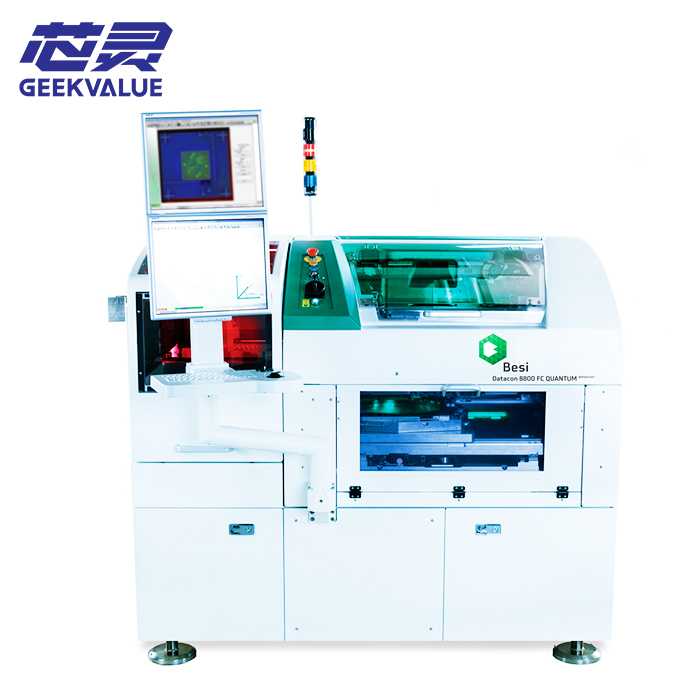The working principle of the ASM die bonder AD50Pro mainly includes heating, rolling, control system and auxiliary equipment. Specifically:
Heating: The die bonder first raises the temperature of the working area to the required curing temperature by electric heating or other means. The heating system usually consists of a heater, a temperature sensor and a controller to ensure correct temperature control.
Rolling: Some die bonders are equipped with a rolling system to compress the material during the curing process. This helps to improve the die bonding effect, eliminate bubbles and improve the adhesion of the material.
Control system: The die bonder usually has an automatic control system to achieve precise die bonding by controlling temperature, rolling and other parameters. This helps to ensure the stability and consistency of the production process.
Auxiliary equipment: The die bonder is also equipped with other auxiliary equipment, such as fans and cooling devices, which are used to accelerate the cooling of the material during the curing process and improve production efficiency.
In addition, the specific operation and maintenance process of the die bonder also needs to pay attention to the following points:
Mechanical structure and maintenance: Including the maintenance and adjustment of components such as chip controllers, ejectors, and work fixtures. For example, the ejector is mainly composed of ejector pins, ejector motors, etc., and damaged parts need to be regularly inspected and replaced.
Parameter setting: Before operation, the PR system of the operating material needs to be adjusted and the program set. Improper parameter setting may cause defects, such as the wafer picking parameters, the table crystal placement parameters, and the ejector pin parameters, which need to be adjusted to the appropriate position.
Image recognition processing system: The die bonder is also equipped with a PRS (image recognition processing system) to accurately identify and process the operating material.







